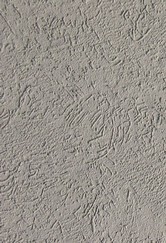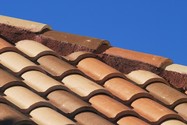Burgher Vision, Inc
Building Techniques
Resources > Get Used to It!
Get Used to It!
Building Techniques & Desert Climate
Las Vegas is located in the Mojave Desert, a little over one hundred miles from Death Valley, California, the hottest place in North America. Average temperatures vary from a winter low of 34°F to summer highs of 105°F, while the average annual rainfall is only about 4½ inches. Average wind speeds vary from 9 to 60mph with occasional higher gusts, and frequently carries dust and sand from the desert. There are few cloudy days to shade the sun, causing building and road surfaces to reach temperatures as high as 200°F.
Exposed wooden structures are quickly stripped of their paint by the sandy winds, requiring frequent repainting, while the intense heat causes wood to show considerable wear after only a few years. As such, you won't find many wooden structures here like you do in most other parts of the United States. There are a few older neighborhoods where wood was used, and their extreme deteriroation is readily apparent. Using houses from my home state of Montana as a reference point, I'd think they look over 100 years old, but in fact they are often only 25 years or less in age.
STUCCO
ROOF TILES
 Of course, wood is still generally used to construct most houses, but it is always covered with some kind of protective material.
Of course, wood is still generally used to construct most houses, but it is always covered with some kind of protective material.
Brick or stone are highly desirable choices for this harsh climate, but they tend to be very expensive and are often found only in high-end neighborhoods, so stucco is generally used instead as a cost-effective compromise.
Modern stucco is a mixture of Portland cement, sand, lime and water, applied over a wire mesh lath. It can be practically any color you want, but in Las Vegas, southwestern or tuscan colors are used such as beige, tan, brown, very light yellow, or sometimes grey.
If you can't stand the look of stucco, then stay away from the southwestern United States. Virtually all new communities are exclusively covered with stucco.
In other parts of the country, you commonly find asphalt, metal, or wooden shingles.
But here in the desert, these materials simply don't provide enough insulation from the hot sun, and deteriorate quickly requiring more frequent maintenance or replacement than they would in other parts of the country. Although you can find a modest number of houses with these types of rooves, usually in older or rural areas, they usually show signs of extreme wear, and you can bet that it's going to be more difficult to keep these houses cool. Accordingly, the choice for rooves here is clay tiles, which stand up very well against the hot sun, and provide fairly good insulation, and are reasonably priced. They can be flat or curved, and come in a variety of colors, but more often than not, they are reddish brown.
Accordingly, the choice for rooves here is clay tiles, which stand up very well against the hot sun, and provide fairly good insulation, and are reasonably priced. They can be flat or curved, and come in a variety of colors, but more often than not, they are reddish brown.